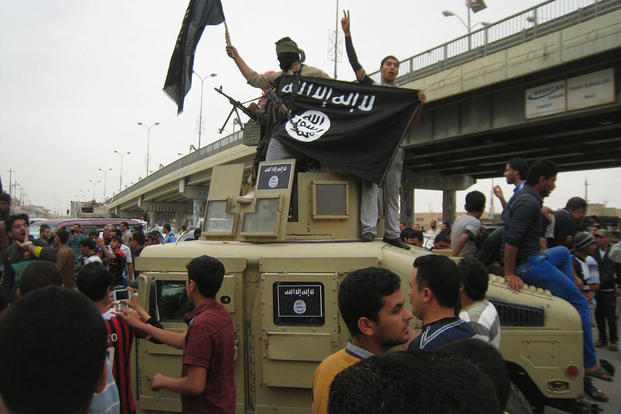U.S. airstrikes killed the ISIS commander in Fallujah as Iraqi Security Forces pushed closer to the city about 40 miles west of Baghdad, a U.S. military spokesman said Friday.
U.S. artillery at the Iraqi base of Taqqadam west of Fallujah has also been firing to back the advance of a mix of about 20,000 ISF, Iraqi Counter Terrorism Services (CTS), and Shia Popular Mobilization Forces on the mostly Sunni city liberated by U.S. forces in 2004 at the cost of nearly 100 lives. Fallujah has been held by the Islamic State of Iraq and Syria since January 2014.
Maher al-Bilawai, who was not considered a "high-value target" but was believed to be in command of the estimated 500-1,000 ISIS fighters in Fallujah, was killed by a U.S. airstrike in Fallujah on Wednesday, said Army Col. Steve Warren, a spokesman for Combined Joint Task Force-Operation Inherent Resolve.
Warren said the strike was carried out based on local intelligence. Although al-Bilawi was not a major ISIS figure, "it’s still a blow, it creates confusion" among the ISIS defenders "but it’s not the end of the game" in retaking Fallujah.
Iraqi Prime Minister Haider al-Abadi announced on Sunday the start of the push on Fallujah following a wave of ISIS truck and car bomb suicide attacks in Baghdad that killed hundreds and let to Shia protests that breached the walls of the "Green Zone," the seat of the Baghdad government and the site of the U.S. Embassy.
Humanitarian groups have warned of a possible bloodbath if the Shia Popular Mobilization Forces backed by Iran enter mostly-Sunni Fallujah, but Warren said the PMF forces "have said publicly that they will remain outside the city" and leave the main attack to the ISF and the CTS.
Iraqi aircraft dropped leaflets over the city this week urging residents to leave and telling those who couldn’t to put white sheets on their roofs to protect them from attack by the ISF and the CTS. However, Warren said that ISIS fighters were also likely to put white sheets on their own fighting positions.
Warren said that about 50,000 people were believed to remain in Fallujah, once a city of about 300,000, and the "Iraqi government has been clear that protecting these civilians is their priority."
Abadi has said that the ISF was working to establish "humanitarian corridors" to allow Fallujah residents to escape, but ISIS snipers and minefields were closing off potential routes.
"We are receiving distressing reports of civilians trapped inside Fallujah who are desperate to escape to safety but can’t," said Lisa Grande, the United Nations Humanitarian Coordinator for Iraq. "Food supplies are limited and tightly controlled. Medicines are exhausted and many families have no choice but to rely on dirty and unsafe water sources."
"It’s tough to get out," Warren said. The ISIS fighters "want to hide behind the civilian population. It’s going to be a hard challenge to find a way to liberate this city and still keep the civilian population as safe as possible."
-- Richard Sisk can be reached at richard.sisk@military.com.
Related Video:
Five Things You Don’t Know: ISIS






























